It is true that Madagascar was neither the easiest destination nor the one where we had the best food, but it is a country unlike any we were used to. It also has something we were eager to see: animals that can only be observed in the wild in this part of the planet.
Madagascar is home to unique species of animals and plants, a result of the island’s isolation after separating millions of years ago, first from the African continent and later from India. This isolation fostered the evolution of flora and fauna that differ from those found anywhere else on Earth, making Madagascar truly one of a kind.
Could there be a better reason to visit a country than to encounter species you’ve never seen before?
The visa is obtained upon arrival, meaning as soon as you land at Ivato Airport. The process is as simple as standing in line and paying, though it’s as slow as everything else in Madagascar. You can find all the details in the article Madagascar Visa.
Traveling to Madagascar is not like going to Asia, where there are flights to suit all budgets. Things are different here because not all airlines fly this route, making it somewhat tricky to find cheap flights.
However, times have changed. While we once paid nearly €1,000 for our flight, today you can find deals for less than €600 to the capital. What a difference! You can check the search engine we typically use through the link above.
It’s essential to travel to Thailand with comprehensive insurance. We were among the first to offer the popular 5% IATI discount, and you can now get it with Heymondo Travel Insurance as well. You can find more information about both companies through the links provided above, or you can access the discount directly using the buttons below (in both cases, you’ll see the reduced final price on their website):
Due to Madagascar’s size and varying altitudes, it’s hard to generalize about the climate, but most of the country experiences two main seasons: a warm, rainy season from November to April, and a cooler, drier season from May to October.
Cyclones can occur anytime during the rainy summer months but are most common between late December and early March.
The East Coast has an equatorial climate and is typically warm and humid year-round. Because it is directly exposed to trade winds, this region is the most affected by cyclones and experiences the heaviest rainfall. Rains are usually brief and light from June to August, while March is the wettest month, and September is the driest.
Generally, the best time to travel is from July to September when the weather is cooler and drier.
The Northwest Coast has a much more defined dry season, with warm, sunny days during July and August. January and February are the rainiest months.
The elevation makes the Central Highlands significantly cooler and drier than the country’s coastal regions. During the southern winter, nighttime temperatures can be very cold, though daytime temperatures remain pleasant. The rainy season extends from November to early April.
While the Central Highlands are enjoyable year-round, one of the best times to visit is in October and November. The weather begins to warm up, and the towns are less crowded compared to the peak season.
The West follows the same general weather patterns as the rest of the country but experiences less rainfall than the East Coast. It is also milder and less humid; however, its dirt roads are prone to flooding, making travel challenging during the rainy season.
The ideal time to visit western Madagascar is during the dry season.
Southern Madagascar is distinct from the rest of the country. Its semi-arid climate is characterized by high temperatures and strong winds throughout the year.
Traveling to southern Madagascar is possible at any time, but those who dislike extreme heat should avoid visiting during December, January, and February.
While many hotels, guesthouses, and restaurants in Philippines offer free Wi-Fi, some travelers prefer or need a constant connection. We’ve included details on obtaining a eSIM Madagascar card with unlimited data (from Holafly) or with fixed data but cheaper (from Saily).
If you want to get it directly, here’s the link (with a discount) for both companies:
Certain vaccines are recommended depending on the type of trip and the duration of your stay.
The best approach is to schedule an appointment at an international vaccination center well in advance, as waiting lists can be long. There, specialized doctors can advise you, answer all your questions, and provide tailored recommendations. In addition, they will give you essential information on preparing your first aid kit and preventing diseases with basic precautions.
Knowledge is power—once you have all the necessary information, you’ll be able to make the best decision for your trip.
Antsirabe is a city of 159,000 inhabitants located in the central part of the country. It is divided into a central, more touristic area and a southern area, which is poorer and less known to travelers.
It is the best place to book a tour along the Tsiribihina River, as it is less expensive than arranging it from Antananarivo. Among the highlights is its petit marché, a vibrant market bursting with colors, smells, and bustling crowds of buyers and sellers.
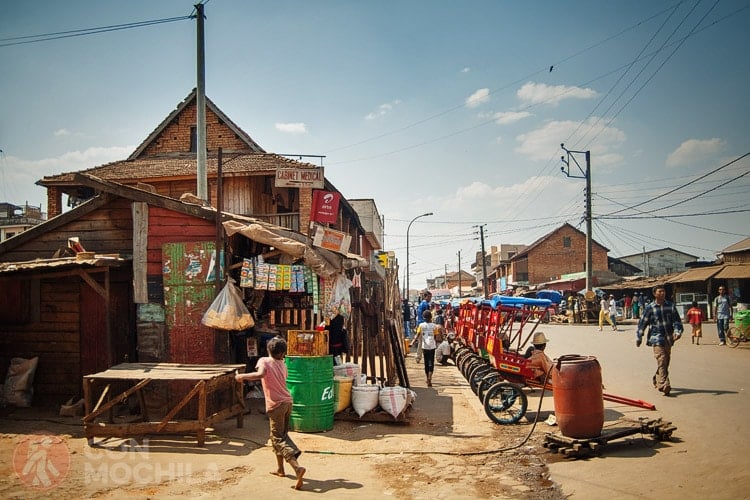
The streets are filled with pousse-pousses, the traditional local transport, which consists of a simple two-wheeled cart pulled by a person. Initially, riding one can feel surprising or even intimidating, but after a few days, you become accustomed to seeing these vehicles everywhere in Madagascar.
Known as the craft capital of Madagascar, Ambositra is a town in the central highlands where you can find intricate wood carvings, raffia baskets, and marquetry. Despite its 28,000 residents, the town has a tranquil atmosphere and enjoys mild temperatures thanks to its altitude.
Its iconic red houses, some of which have been converted into hotels, line the streets of this area, home to the Betsileo people, one of Madagascar’s ethnic groups.
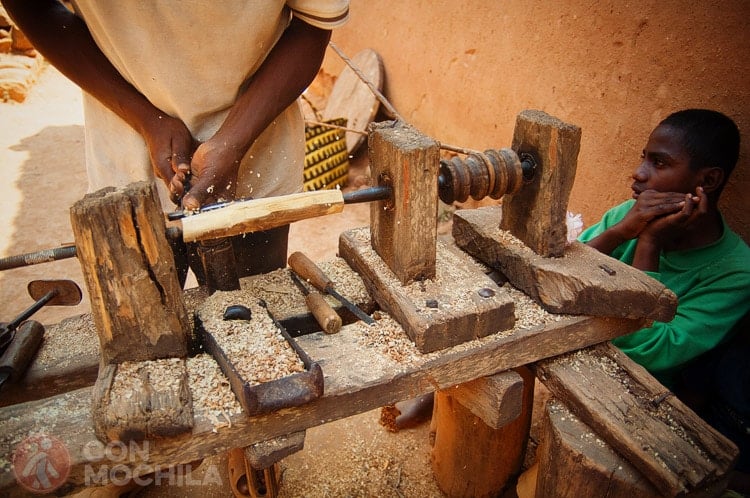
As expected, the pousse-pousse remains the most common mode of transport in Ambositra, omnipresent on every street and ready to take you wherever you need to go. The peaceful ambiance of the town is often interrupted on Saturdays when the bustling Ambositra market takes place near the church.
Morondava is a peaceful coastal town in western Madagascar, best known for its proximity to one of the country’s most famous attractions, the Avenue of the Baobabs.
Although many tourists use this town as a base to visit the avenue, it has enough charm to stand out on its own, offering a welcoming atmosphere, beaches, and lively bars.
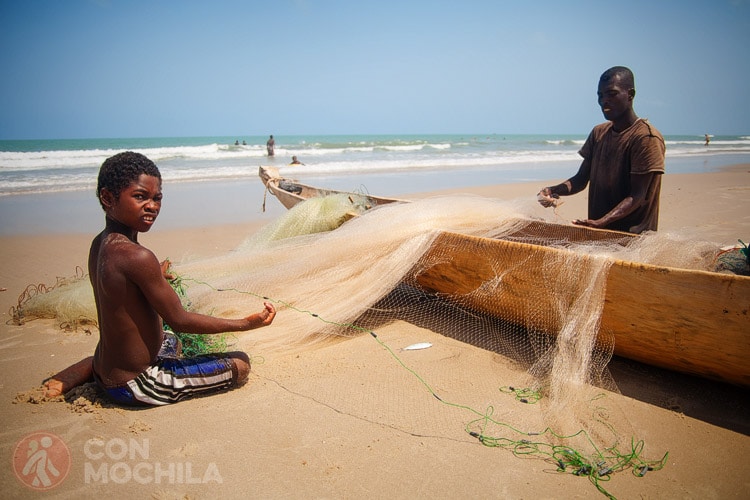
Morondava is divided between the coastal village and the Nosy Kely area, near Bethany Beach. For a glimpse of local life, we recommend visiting the market, where, as expected, the main attraction is fresh fish.
Despite being the country’s capital, Antananarivo defies the typical image of a big city. Instead, it resembles a sprawling town with low-rise houses, no tall buildings, and only a few notable attractions for tourists, such as Independence Square and Lake Anosy, where a monument to the fallen stands at its center.
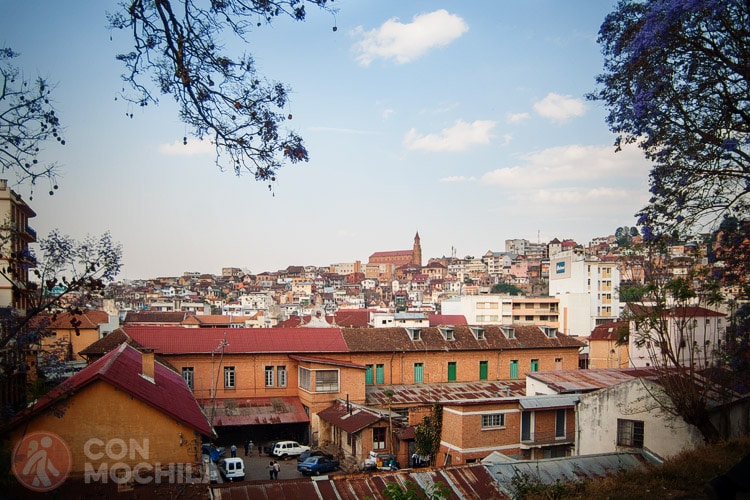
The city has a reputation for being dangerous. In fact, the owner of our hostel insisted we go out for a walk without our cameras to avoid drawing too much attention. However, despite these warnings, we never felt unsafe during our visit.
Andasibe is a small, enchanting village in eastern Madagascar that feels like it belongs in a fairy tale. Apart from the old train station (now a hotel), the post office, and a couple of churches, most of the village’s buildings are made of wood.
Surrounded by forests and frequently blessed with rainfall, Andasibe is a lush paradise drenched in greenery.
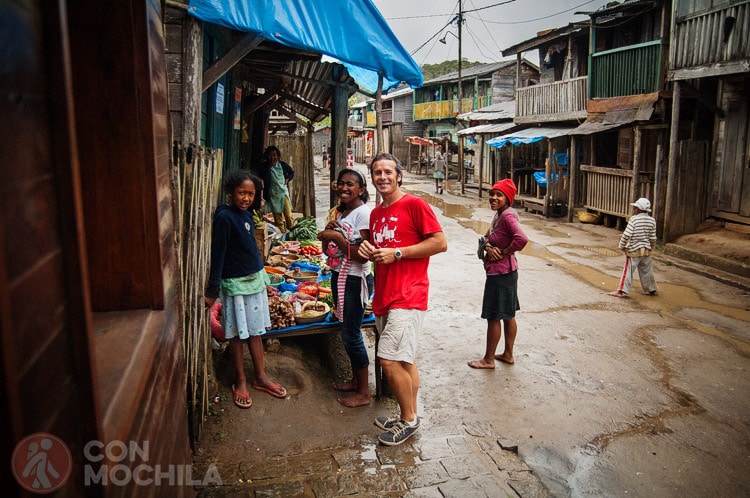
The main reason to visit Andasibe is its proximity to two significant parks: the Analamazaotra Special Reserve and Mantadia National Park.
Perhaps our fondness for Ambalavao stems from the fact that it served as our gateway to the Anja Reserve. Truthfully, it’s a modest town with little more than four streets, a tourist office, a church, a market, and a few street food stalls (be sure to try the peanuts!).
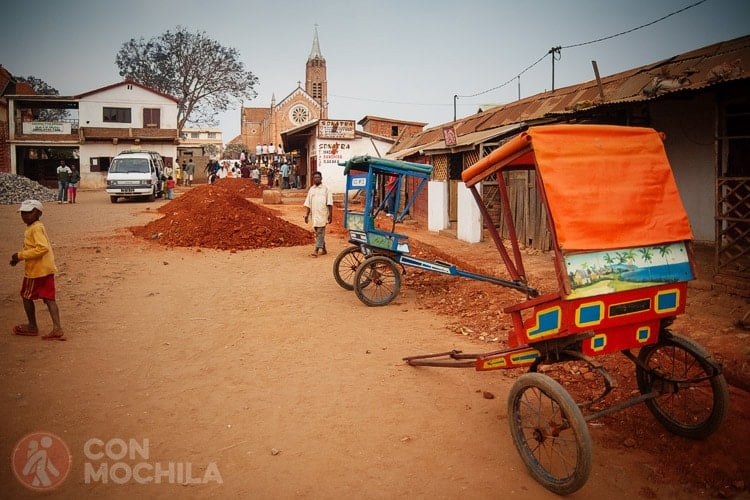
Nonetheless, we thoroughly enjoyed the hours we spent in this highland village, with its colonial-style houses and dusty streets tinged with a reddish hue. We also took the opportunity to relax at La Résidence du Betsileo.
The final highlight of our trip was a visit to the NGO Fami Bongolava. Founded by Julian, who recognized the dire conditions faced by the children of local farmers, this organization strives to provide children with access to education and healthcare.
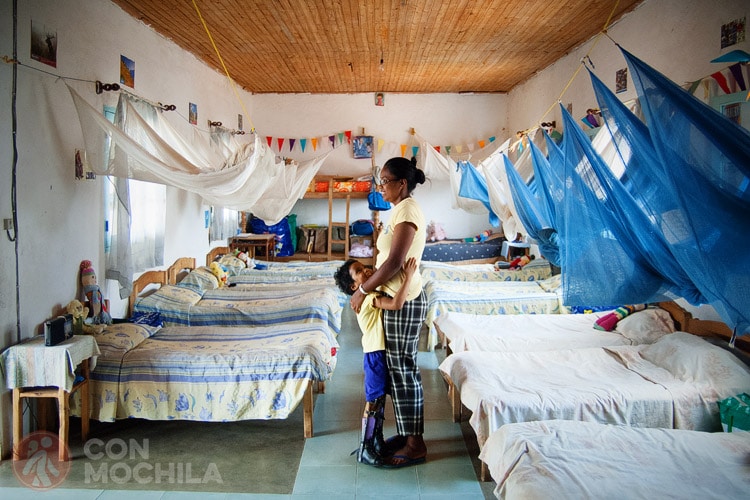
Over the course of two days, we witnessed the incredible work they do firsthand. The visit was an enriching and intense experience, during which we spent a day with the team and met many of the students benefiting from the opportunity to study.
For a detailed account of our visit, see the corresponding chapter of our trip journal.
The Grand Tsingy de Bemaraha is a UNESCO World Heritage nature reserve, famed for its sharp rock formations and karst mountains shaped by underground waters. This erosion has created the unique landscapes so often featured in Madagascar travel guides.
You can read about our adventure exploring its interior and climbing to the top in Chapter 10 of our travel diary. If you’d like a sneak peek before your visit, check out some photographs of the Tsingy.
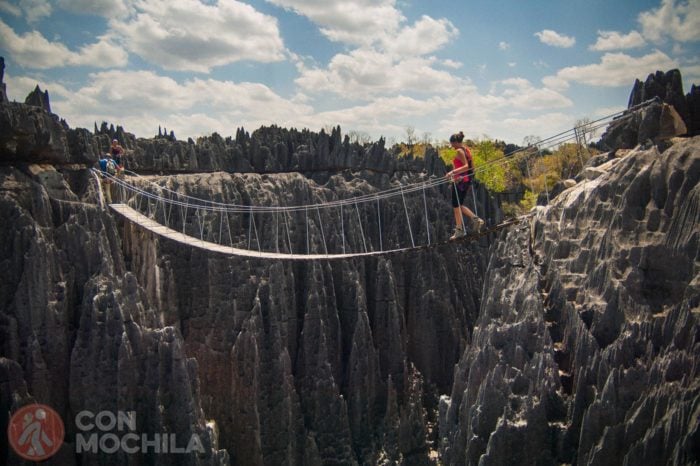
As in every park in Madagascar, the wildlife takes center stage. During our visit, we encountered Decken’s sifakas, a type of lemur. We were fortunate to see several of them and managed to take many photographs of these fascinating creatures.
Who hasn’t seen a photo of the Avenue of the Baobabs? Undoubtedly, this is one of Madagascar’s most iconic locations. The stars of this avenue are these peculiar trees—massive, photogenic, and, as many say, resembling upside-down trees with their roots in the air.
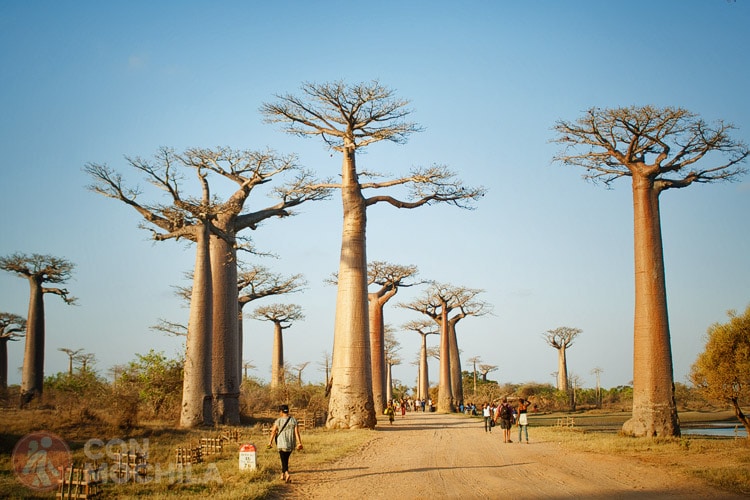
The avenue is located very close to Morondava. We arrived there as the final part of our tour, which began in Tsiribihina. We had an amazing time taking photos, as described in Chapter 11 of our travel diary.
Anyone planning to visit western Madagascar will likely consider exploring the Grand Tsingy of Bemaraha. The fastest way to get there is by taking the road to Belo-sur-Tsiribihina and continuing to Bekopaka in a 4×4.
For those seeking a more adventurous experience, canoeing down the Tsiribihina River is a fantastic option. This journey includes camping along the riverbanks and discovering incredible wildlife in its natural habitat.
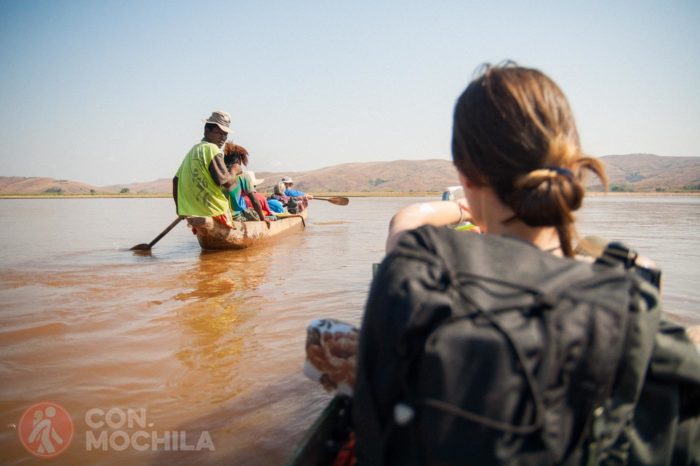
This tour takes seven days, starting in Antsirabe and ending in Morondava. You can find more details in our guide How to Book the Tsiribihina River and Grand Tsingy Tour.
One of our most cherished memories from the trip is visiting the Anja Reserve, located near the town of Ambalavao. This small reserve is home to the famous ring-tailed lemurs (catta), the most recognizable animals on the island, thanks in part to the animated film that made them popular. Do you remember King Julien? That’s the very species!
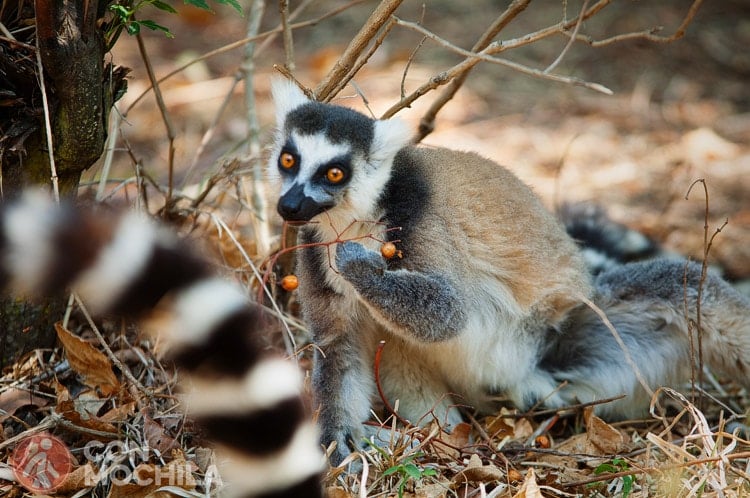
Hundreds of these lemurs live in Anja, making it incredibly easy to spot them. In fact, it’s more likely to see them than not. Seeing them in the wild—some with their babies—was thrilling.
Located near the small town of Andasibe, the Analamazaotra Reserve is one of the best places to see the indri, the largest lemur species. These uniquely built animals, known locally as babakotos, communicate with cries that sound like a thunderstorm.
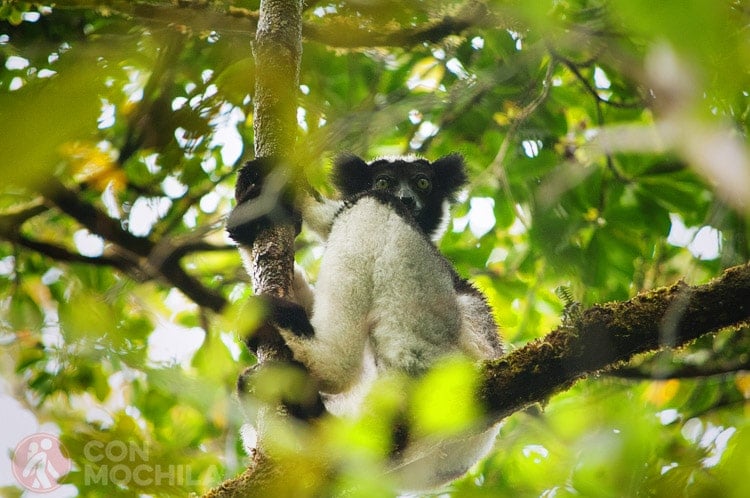
If you stay somewhere near the park, such as the charming Feon’ny Ala Hotel, you might hear them calling in the morning. Spotting them depends on luck and the expertise of your guide.
Mantadia National Park is about 20 kilometers from Andasibe. However, due to the state of the roads, it can take nearly an hour to get there. Perhaps this is why it’s not as popular with tourists.
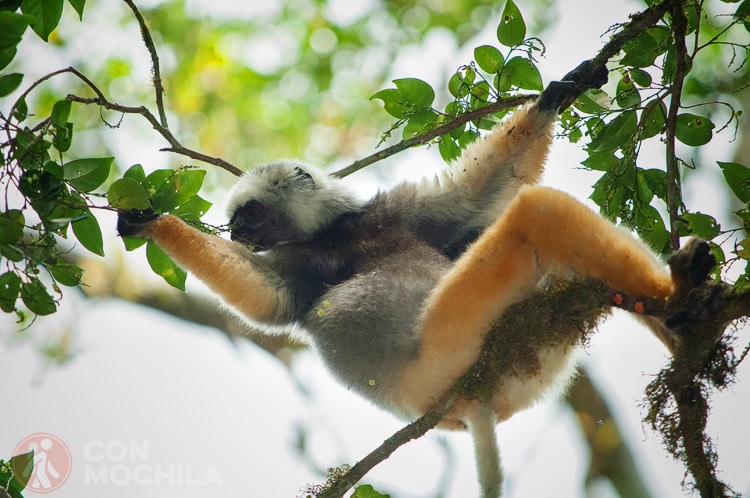
The park is home to many species, including the diademed sifaka, the common brown lemur, and Milne-Edwards’ lemur. However, the main star is the fossa, Madagascar’s largest predator.
We were incredibly lucky to spot two fossas high up in a tree. The chances of seeing one are slim, and even our guide was amazed by the encounter.
We’ve only shared a glimpse of a few parks, as time didn’t allow us to visit more. However, this unique African island is full of national parks, and we’re sure you’re planning to explore several to fully experience its extraordinary flora and fauna.
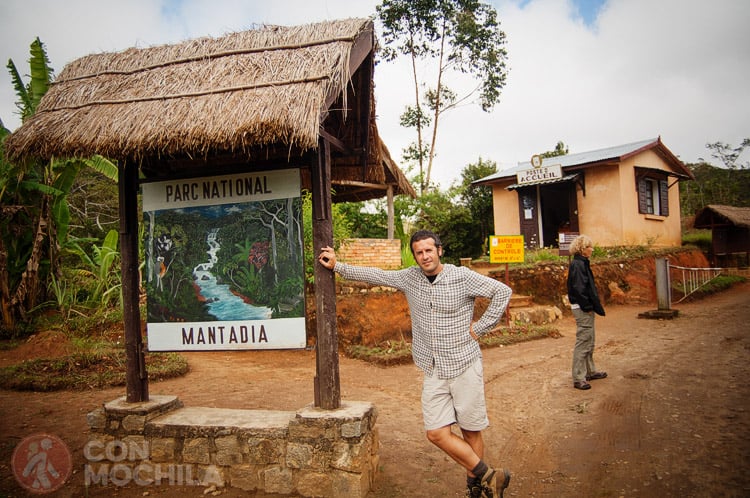
For more details, check out our article Discover the 19 National Parks of Madagascar. Take a look at the list and mark your favorites before planning your itinerary.
Our philosophy, at the beginning, was always “book the first night and then go find hotels as you go” but since people began to travel in masses, new hotels and new “fully booked” signs emerged, along with new booking websites. The advantage is that now you have, within reach of a click, a lot of hotels and guesthouses that you can choose from before arriving at your destination.
We recommend platforms like Booking.com or Agoda.com, which are very active in countries like Madagascar.
As we’ve mentioned before, the most common way to get around Madagascar is by taxi-brousse, which can be found in all cities. For safety reasons, it’s better to travel during the day, as some routes are prone to robberies at night.
Another mode of transport worth mentioning is the pousse-pousse, a traditional form of transport in Madagascar. It’s a small cart pulled by a person and is a common way to get around. Contrary to what some might think, we didn’t sense any arrogance or discomfort from passengers who chose this mode of transport.
Not at all. The drivers of these unique vehicles, who sometimes gather in groups to form makeshift stations on street corners, earn their livelihood by transporting curious travelers, commuters, schoolchildren, and occasionally goods such as boxes, bottles, or even pig carcasses.
How much money will I spend traveling around Madagascar on my own? This is the million-dollar question, and one of the first things we all wonder when planning a trip; it’s directly tied to the budget.
We can’t tell you exactly how much you’ll spend, as it depends on the type of trip you want to take. However, here are some price ranges to help you estimate costs and get an idea of the general expenses in Madagascar.
Malagasy cuisine didn’t particularly appeal to us, so we mostly ate rice dishes with whatever was available. At the simplest restaurants, pasta or noodle dishes typically cost between 5,000 and 8,000 ariary. From street stalls, you can enjoy breakfast with coffee and pastries for just 500 ariary.
The most popular beer brand is THB (Three Horses Beer). A 65cl bottle usually costs between 2,000 ariary (in hotels or drink stalls) and 4,000 ariary in restaurants and tourist hotels. Most of the time, you’ll find it for around 3,000 ariary. Other brands like Skol, Gold, or Castel are generally priced similarly.
For transport, prices vary depending on the route. For instance, we paid 15,000 ariary for the Antananarivo–Antsirabe route, which was the most expensive, and about 2,000 ariary for the Moramanga–Andasibe route, which was the cheapest.
Madagascar uses the Malagasy Ariary (MGA) as its official currency. ATMs will charge a fee for cash withdrawals.
It’s important to know that your home bank may charge between 3–8% in fees for each withdrawal. The good news is that nowadays, there are cards that either don’t charge fees or charge a lower percentage (around 1.7%). For more details, check out our article Credit Cards and Accounts Without Fees for Traveling (coming soon).
If you prefer, you can exchange currency before your trip with Ria, which offers one of the best exchange rates available. The link above provides a detailed explanation of how it works.
There are two main ways to get around the country: taxi-brousse or 4×4 vehicles. Taxi-brousses are the local option: vans that don’t depart until they’re full, so you never know exactly when you’ll leave. For some routes, it’s advisable to use a 4×4 due to the poor condition of the roads and to avoid long waiting times.
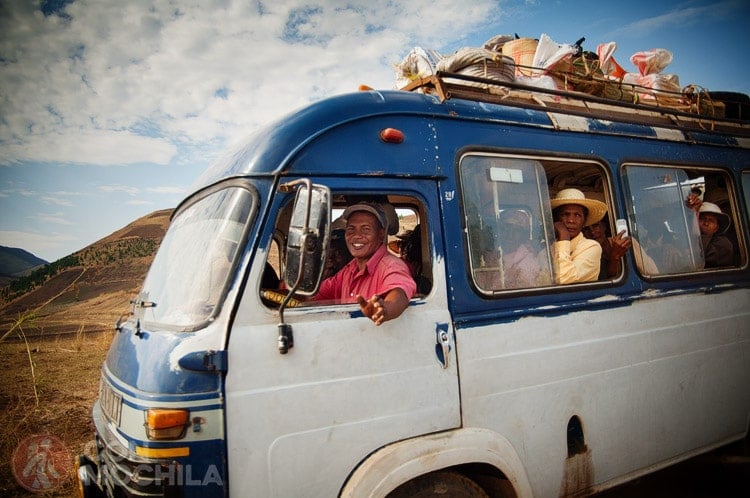
Patience is key, as the journeys can be very long. We spent more than 70 hours traveling by taxi-brousse, and it wasn’t always a pleasant experience. Sitting in the back row of a crowded taxi-brousse is definitely not for the claustrophobic.
Rescue in Madagascar (The Aye-Aye and I) is a book by Gerald Durrell that recounts his expedition to Madagascar in search of the aye-aye, a small nocturnal lemur known for its very long fingers and unconventional appearance.
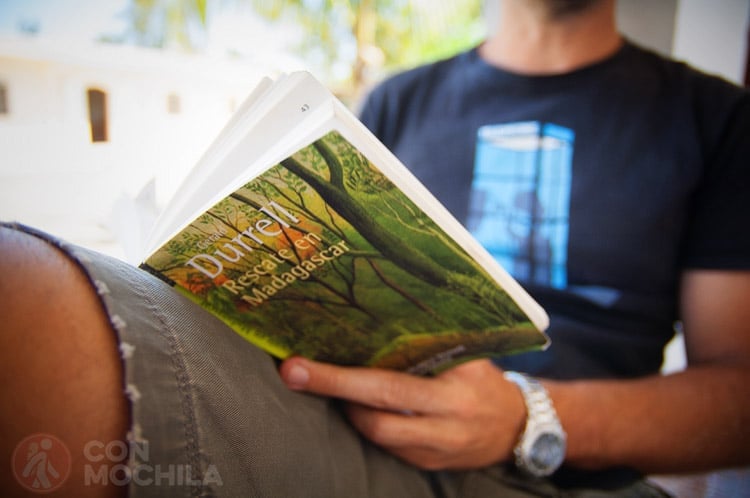
Durrell and his wife spent time on the island with their team, working toward their goal. In the book, he humorously narrates their journey, making it an entertaining read while also teaching readers a great deal about Malagasy wildlife. This book is highly recommended for anyone looking to begin discovering Madagascar from afar.
We usually rent scooters when we travel, but surely at some point, we’ll want to rent a car (or a tuk-tuk) and remember the day we decided to get an international driving permit.